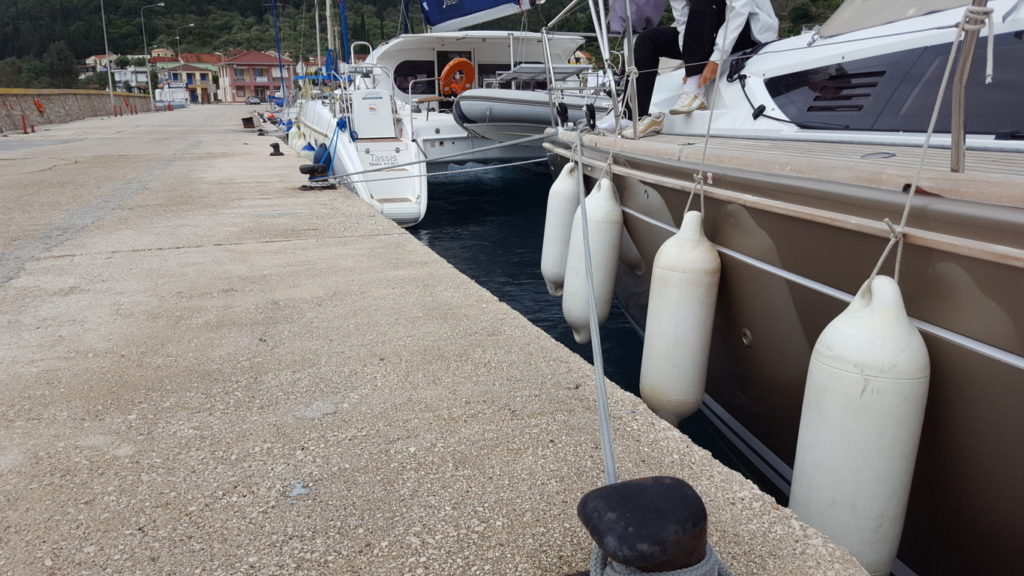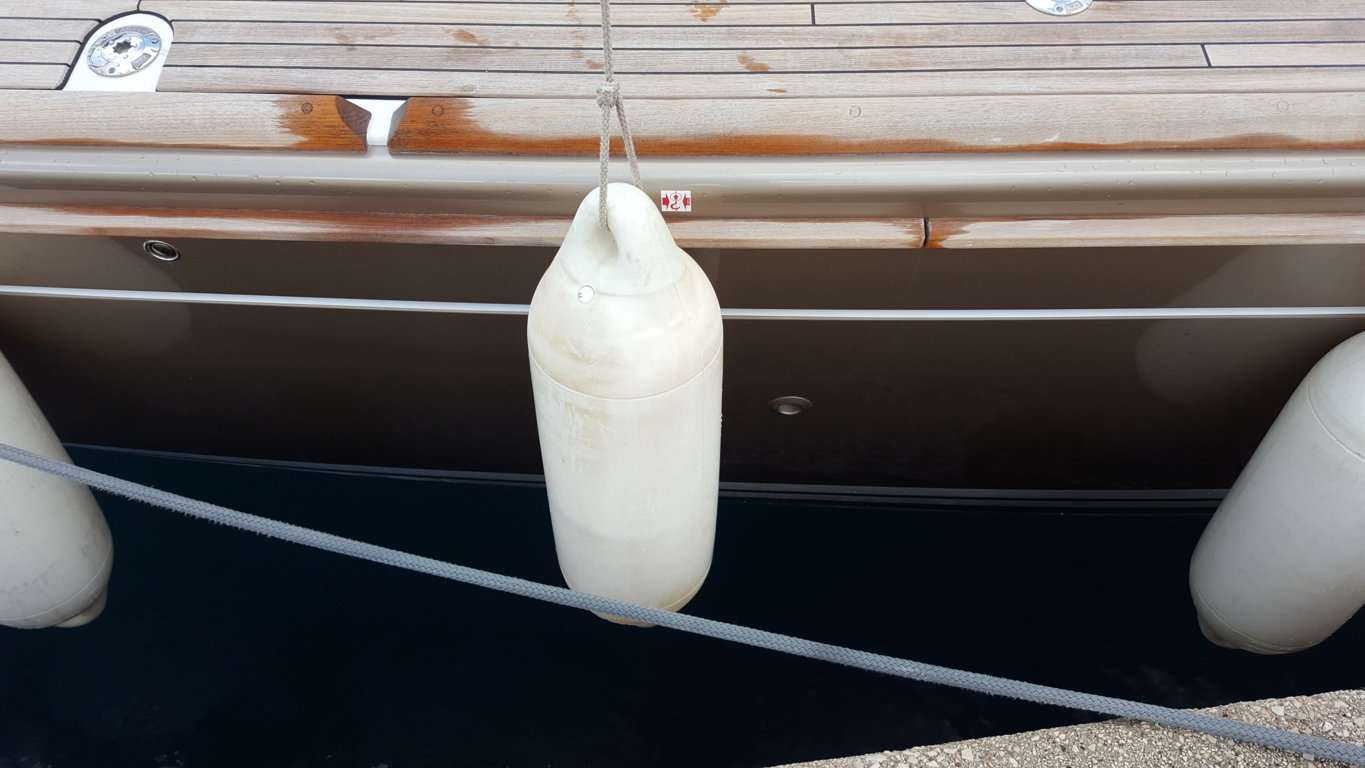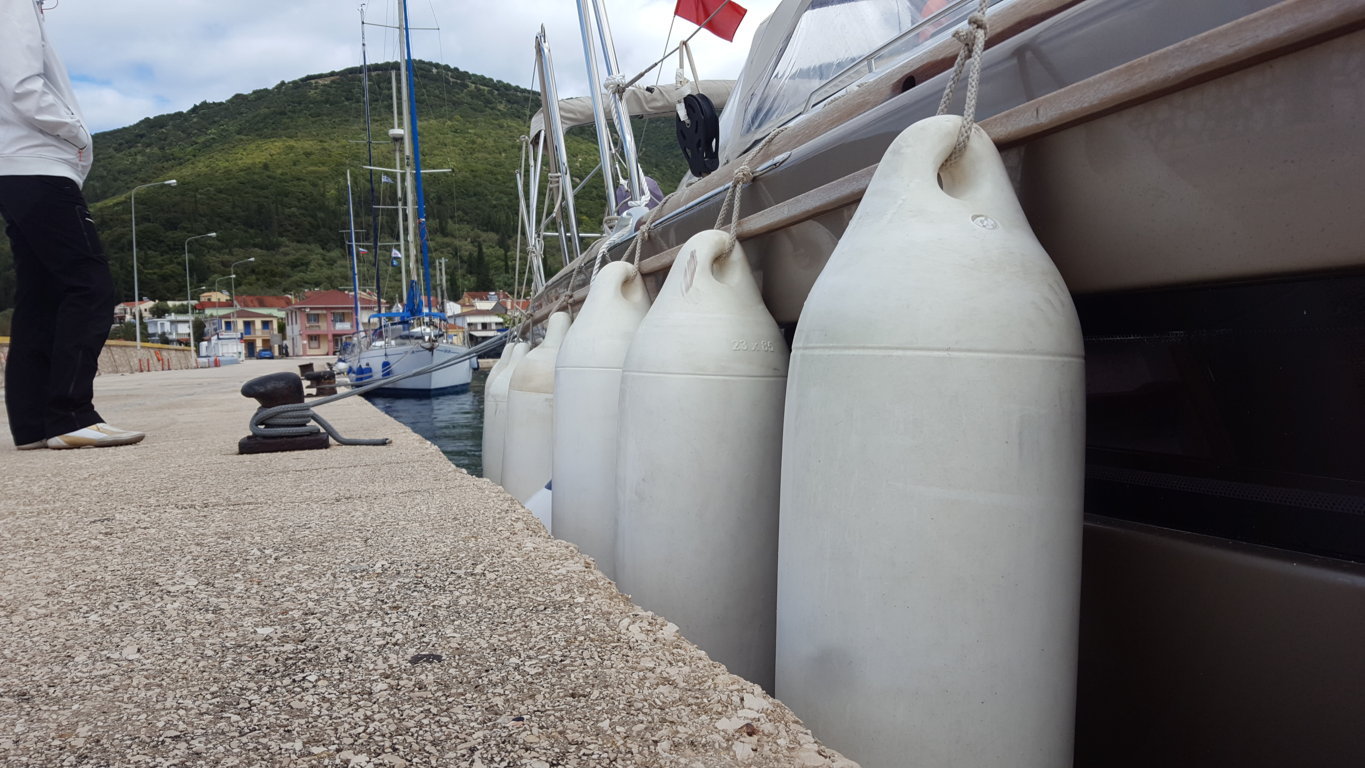They are indispensable items, yet their importance is often underestimated.
First, let’s remember an important and somewhat obvious detail: fenders should not remain fixed once initially placed, but need to be adjusted with each new mooring. Otherwise, they lose their main quality, which is adaptability to different situations.
With this necessary premise established, let’s proceed step by step with the preparation procedures for using fenders during mooring. The most suitable knot is the clove hitch, not coincidentally nicknamed the “fender knot.” Simple, effective under tension, and reinforceable later with a rolling hitch or half hitch, the clove hitch has all the characteristics to perform its task.
However, be careful not to make careless mistakes, especially when preparing the knot while letting the fender hang outside. This operation is partly risky but necessary for taking measurements and avoiding trial and error. While recommending maximum attention, we remind you that when the knot is untied, the fenders can safely rest on the deck.
Once all these preliminary operations are completed, you need to decide where to position the fenders. The general rule is that preparation should take place
If you know the mooring situation in advance, fender placement becomes automatic. If not, they can be positioned at a
Placement depends on the boat’s structure. A classic layout has the widest part of the hull in the center, and that’s where the fenders should be positioned. If the maximum beam is aft, they should be placed closer to the stern. It’s good practice to always keep one or two spare fenders in the cockpit while performing approaching or mooring maneuvers, so they can be positioned later as needed.
These small tips will help you make the best use of your fenders and reduce the risk of seeing them end up in the sea. We’ll close with one final tip: it’s preferable to tie them to the stanchions or to the lifelines where they pass through the stanchions. This is because lifelines, under constant weight, eventually “relax.” Better to avoid this when possible.




